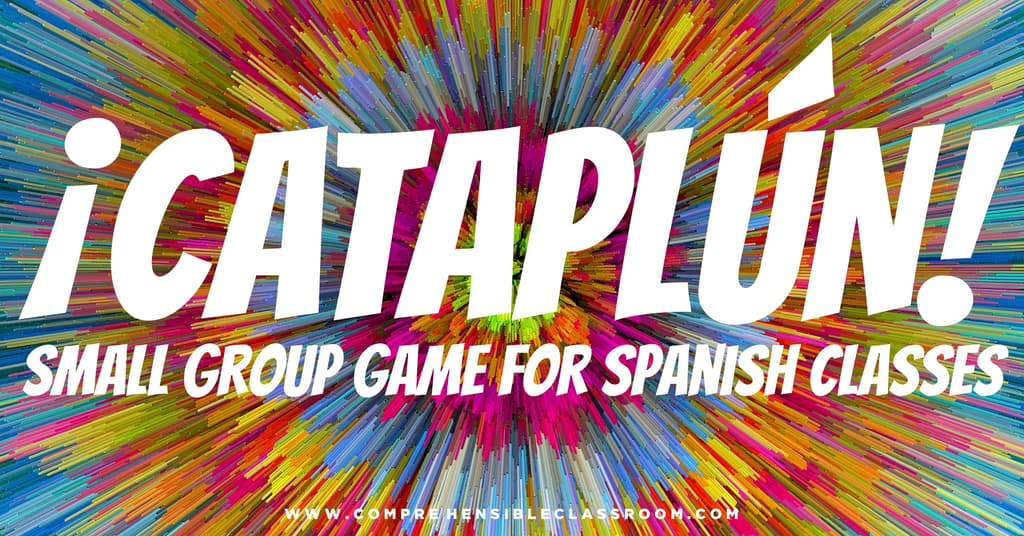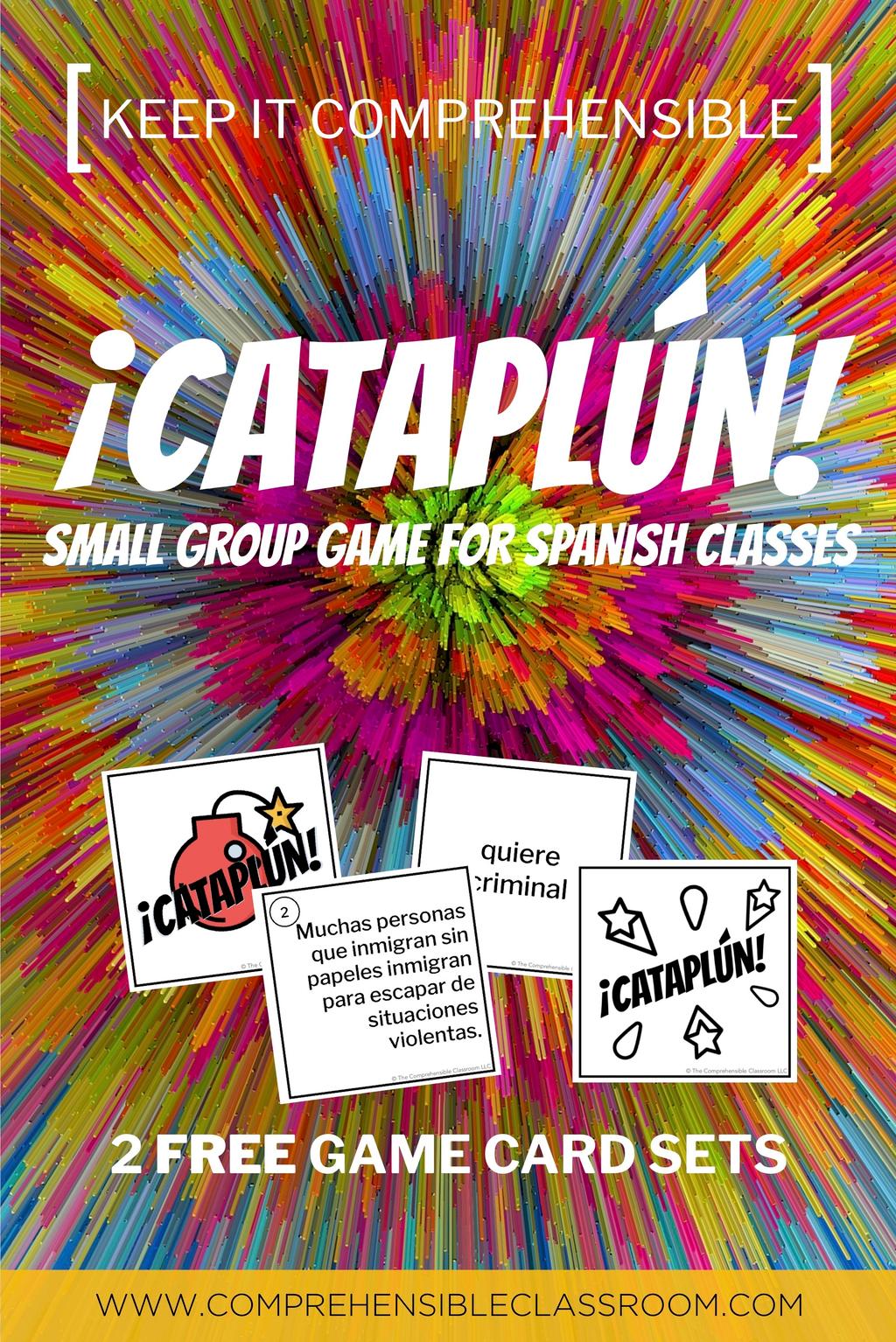Tomorrow is Friday, it's the first week back from break, and you're exhausted. What to do, what to do...
"MovieTalk?" --you think-- "No, too much standing and talking."
"Asking a story?" --but you dismiss it-- "Too much standing and talking and energy used in general."
"Picture Talk?" --now there's an idea!-- "No, too much using my voice."
"Embedded reading?" --surely, this is the one! But no-- "Too much laying-your-head-down-on-the-book-and-falling-asleeping".
The game you need when you are tired
You need ¡CATAPLÚN! ...otherwise known as KABOOM! in English.

What is Cataplún?
CATAPLÚN is a small group game that is traditionally played with popsicle sticks. But let's get real...you're lucky if your department is supplying you with paper; forget about funds for popsicle sticks! Furthermore, popsicle sticks are most conducive to using single words or numbers. In language classes, ¡Cataplún! is most useful when we work with contextualized language: sentences and questions! Instead of popsicle sticks, I prefer to make ¡CATAPLÚN! cards out of paper.
How to play ¡Cataplún!
During game play, students take turns drawing a card.
On the card, there is either some kind of content that students must use to complete a task, or there is an explosion: ¡Cataplún!
If students demonstrate that they are able to complete the task, they keep the card. When they can't complete the task, they return the card to the pile. If they draw an explosion card....¡Cataplún! All of their cards return to the pile.
How to win Cataplún
The player with the most cards in their hand at the end of the game wins!
What kinds of tasks can Cataplún be used with?
Here are some possible tasks that students can complete with content on ¡Cataplún! cards:
- Translate a sentence from Spanish (target language) to English: See this example that includes sentences from the FREE Summer 2018 issue of El Mundo en tus Manos.
- Translate a sentence from English to Spanish
- Read a question in Spanish and respond in Spanish
- Fill in a missing word
- Choose between two or three words to correctly complete a sentence
- Create an original sentence in Spanish using word(s) provided: See this example.
- State whether a statement is true or false
- Describe a word in Spanish (circumlocution)
- Read a sentence and identify which piece of content it came from (which article, which book, which class story)
- Describe a character
- State whether you like or don’t like the thing listed on the card
- Restate a sentence in a different tense or from a different perspective (horizontal conjugation)
- Negate a statement
- Describe or identify a picture
- Conjugate a verb according to the subject given
- Read a text-based question and identify its QAR type
The same set of cards can even be tasked differently for multiple uses. For example, if you have a set of sentences, you could play the game differently on different days:
- Translate from Spanish to English
- Horizontal Conjugation
- Write a sentence that could have come before or after (or, if students are looking at a text, write the sentence that DOES come before or after it)
- Negate it
- Write a question about it (or a question to elicit that sentence as the answer)
Truly, the possibilities are endless!
Setting up ¡Cataplún!
I recommend creating 36 cards (3 sheets of 12 cards). 30 cards should be content cards, and 6 or 9 cards should be ¡Cataplún! Explosion cards. Keep reading to find out what kinds of content should be on the content cards!
I cut apart the cards and then fold them in half along the diagonal so that they are easier to grab without looking!
 Print out your Cataplún cards: 36 cards total; 6-9 of which are Explosions and the rest are content
Print out your Cataplún cards: 36 cards total; 6-9 of which are Explosions and the rest are content Cut apart your cards...and laminate them if you plan to reuse!
Cut apart your cards...and laminate them if you plan to reuse! Fold in half along the diagonal to make them easy to grab. This step is not necessary, but it's helpful!
Fold in half along the diagonal to make them easy to grab. This step is not necessary, but it's helpful!
To make it easy, I have created an editable set of Cataplún cards and added it to my materials for Editable Stations for language classes.
Want just the ¡Cataplún! template? Click here to get it now!

Click HERE to get the sample set of cards from articles in El Mundo en tus manos (Summer 2018) and HERE to get sample sentence building cards!
What about accountability?
You may decide to have each student keep a recording sheet on which they write down any tasks that they complete. This can serve as a formative assessment, allowing you to see the language that students are producing during the activity, even if you can't be in all places at all times ;-)
Favorite games?
What are your favorite games for language students that keep the input flowing without you having to provide it?
I first learned about Kaboom from Saddle Up for Second Grade, and I enjoy playing it with my own kids at home!




